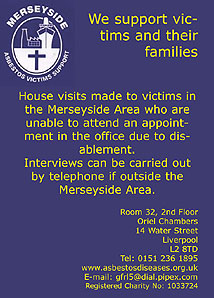
| HOME |
| NERVE |
| REVIEWS |
| ARCHIVE |
| EVENTS |
| LINKS |
| ABOUT US |
| CONTRIBUTORS |
| BACK ISSUES |
| CONTACT US |
 Two million
workers die each year through work-related 'accidents' and diseases because:
Two million
workers die each year through work-related 'accidents' and diseases because:
Capitalism Makes You Sick!
By Steve Tombs
Neither political nor popular discussions about 'health' tend to incorporate the everyday threats to our health and safety that we face simply by working for a living. Yet work routinely kills workers and members of the public on a scale that is almost incomprehensible. In May 2002, the International Labour Organisation (ILO) estimated that two million workers die each year through work-related 'accidents' and diseases - a figure which it said is 'just the tip of the iceberg'. For each of these fatalities (5,000 every day), there are another 500-2,000 injuries; and for every fatal work-related disease there are about one hundred other illnesses causing absence from work.
Yet despite these kinds of estimates - the most reliable available - we really know very little about the real scale of death and disease caused by work activities, which itself tells us something about political priorities in societies where seemingly everything that can be recorded about populations is recorded. However, it is at least possible to highlight the sheer scale of the carnage caused by work. We can do so by considering just one category of deaths in one country - deaths from asbestos exposures in Britain. The Health and Safety Executive (HSE) - which is charged with overseeing health and safety law in England, Scotland and Wales - has noted that there were 1,862 deaths from mesothelioma, an asbestos-related cancer, in 2002, and a further 1,800 deaths from asbestos-related lung cancers. In fact, as the HSE itself recognises, actual deaths related to asbestos exposure are far, far higher. Asbestos-related deaths continue to rise in this country (not to peak until around 2025, according to the government), years after the apparent demise of the industry, and over a century after the first record of death related to asbestosis in this country. Thus 'excess deaths' in Britain from asbestos-related diseases could eventually reach 100,000. One study projected that in western Europe 250,000 men would die of mesothelioma (just one asbestos-caused cancer) between 1995 and 2029; with half a million as the corresponding figure for the total number of West European deaths from asbestos.’
No location is likely to be immune from susceptibility to diseases caused by asbestosis - such was the widespread use of this 'magic mineral' that was 'inextricably linked' to industrialisation in Europe and America. Some locations, though, are likely to be blighted more than others. Merseyside, as a port and a centre of industrialising Britain, is one of these.
In 1993, the Merseyside Asbestos Victims Support Group was formed. A voluntary organisation and a registered charity, it is run by victims of asbestos-related diseases and their families. This and other organisations like it around the country have been the key movers, not only in seeking some justice for victims and their families, but also in recording the prevalence of asbestos and its victims.
Thus the Group has documented Merseyside's long history of asbestos, widely used in local industries such as car production, garage work, building work, railway maintenance, tunnel construction, and shipbuilding. Liverpool docks used to import huge amounts of asbestos, as late as 1975, 25,300 metric tons of asbestos were imported, exposing thousands of dockers to asbestos. Local shipyard workers have described fights using asbestos as snowballs.
Through the use of novel sources of data, the Merseyside group has been able to compile indications of the sheer scale of victimisation in Liverpool and surrounding areas. For example, it uncovered a letter sent by a consultant pathologist working in Liverpool Broadgreen Hospital in 1976 to the Asbestos Information Committee, an asbestos industry supported body. Part of that - reproduced on the Group's excellent website - states that: 'At present I am assessing the asbestos fibre lung content of the adult population of Liverpool, from post-mortem tissues and surgical tissues, in people who had no known asbestos contact. By the method I use most urban adults have between 2,000 and 7,000 asbestos fibres of dried lung. Only 8% of the population studied so far had a total absence of asbestos.’ Similarly, as the Group also reports, an Occupational Health Project interviewed 2,601 men in doctors' waiting rooms in Liverpool between April and October 1992 and found 335 cases of exposure to asbestos. 13% - or 1 in 8 - men were found to have been exposed at work.
And even these figures are under-estimates. They do not count those people who remain unaware of their exposure to asbestos, and this would include many groups of workers, DIYers, women who washed the clothes of men working with the stuff, those working in deteriorating or refurbished buildings where asbestos is present, and those in local communities where the substance is illegally dumped following the introduction of regulations designed to ensure its safe removal.
It is impossible to account for the scale of the physical, emotional, and psychological harm caused by the use of asbestos - knowledge of which the industry has tried to suppress for over one hundred years by co-opting the medical community, attacking critical science and funding industry-friendly research; by forming apparently 'independent' lobbying groups, through quite simple and routine cover-ups, manipulation of data, and lying to workers and regulators.
All that said, one grain of comfort might be found in the fact that the hazards associated with asbestos are so well known that at least some financial compensation is available to victims and their families - still rare in the case of occupational disease in this country. Yet despite the Government and insurers' recent obsessions with 'compensation culture' - undoubtedly more myth than reality-compensation is hard to come by, even following asbestos exposure. As the Merseyside Asbestos Victims Support Group is able to state with confidence - following years of supporting victims through a tortuous and class-based legal system - asbestos claims are 'very complex': 'The nature of asbestos civil claims makes it very difficult for victims to claim; in 95% of cases they are referring to asbestos exposure some thirty to forty years ago. However a case cannot proceed without proof of employment at a place of work where the claimant was exposed to asbestos. The claimant also has to produce witnesses to that exposure. This may mean a sixty year old building worker - who may have worked with asbestos in the 1950s on a small maintenance job - will have to produce eye witness accounts to his asbestos exposure. This makes it extremely difficult for claims to proceed. And even this litany of obstacles does not account for both ignorance and recalcitrance on the part of legal and medical professions, for each of whom occupational health issues are low down on their agendas, if present at all.
 Given these
observations, it is not surprising that, as the Hazards movement has recently
determined, only half of the almost 2,000 people officially recognised
as 'dying each year of the asbestos cancer mesothelioma receive industrial
injuries benefit payments - despite the condition being accepted as caused
by work, being devastating and being a guarantee of an excruciating death.
Scarcely anyone suffering the even more common asbestos-related lung cancers
- fewer than 100 a year - receive compensation.’ Compensation culture
indeed!
Given these
observations, it is not surprising that, as the Hazards movement has recently
determined, only half of the almost 2,000 people officially recognised
as 'dying each year of the asbestos cancer mesothelioma receive industrial
injuries benefit payments - despite the condition being accepted as caused
by work, being devastating and being a guarantee of an excruciating death.
Scarcely anyone suffering the even more common asbestos-related lung cancers
- fewer than 100 a year - receive compensation.’ Compensation culture
indeed!
But there is a further twist in the tale of compensation, one which the Hazards movement - again - has begun to document. Through the 'innovative' use of bankruptcy laws and political lobbying for a capped global compensation pool, asbestos companies are fighting tooth and nail to avoid meeting even minimal financial obligations to those whom they have sent to their long, painful death’s. A key element of these efforts has been to claim that the industry is in dire financial straits and in global decline. Yet neither of these claims stands up to the slightest scrutiny. In many respects, the global asbestos industry is in rude health, and this very health raises the prospect of a new epidemic of ill health across the globe for working people and their families. While the industry fights ban after ban, almost one hundred and fifty countries are still using asbestos. Global production increased by 5.4% in 2003, with Asian countries seeming to be the key markets. And even some developed nations have increased imports of asbestos: latest US Commerce Department figures show that US asbestos imports have climbed by 300% over the last decade, while the 5 largest asbestos targets who have filed for bankruptcy are all doing 'rather well'.
Even for those of us who have long recognised the diseased nature of capitalism, some of these observations are shocking. But for all of us who are concerned with public health, the workplace must be a central concern. Our response must be to challenge local, national and global debates around 'health' that fail to account for detrimental effects of working – particularly because these are unequally distributed, falling most heavily upon already vulnerable. And in so doing we must elaborate in a myriad of ways around a central, basic truth: capitalism makes you sick.
Printer friendly page